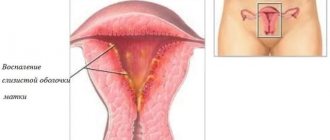How is the date determined?
The date of a caesarean section depends on whether it is performed as planned or emergency. If the need for surgical intervention is known in advance, for example, the fetus is malpresented or the woman has an anatomically narrow pelvis, then the operation is scheduled several days before the expected date of natural birth.
Sometimes a caesarean section must be performed before labor begins (with placenta previa). The operation is scheduled at 38 weeks, when there is no longer a threat to the baby’s health.
There are situations in which a woman’s health condition does not allow her to carry a child to term. For example, with severe gestosis that cannot be treated. The condition is accompanied by the development of edema, disturbances in blood circulation and kidney function, the appearance of convulsive seizures with loss of consciousness and respiratory arrest. In such cases, delivery is performed several weeks or even months ahead of schedule.
An emergency caesarean section may be performed if complications develop before or during natural delivery. For example, with the appearance of severe bleeding, uterine rupture, acute oxygen starvation of the fetus, premature rupture of amniotic fluid.
What happens before surgery?
When a caesarean section is performed as planned, the woman is sent to the maternity hospital a few days before the operation. Doctors conduct an examination, determine the child’s readiness for birth, and assess the condition of the pregnant woman.
18 hours before the procedure you need to stop eating and drinking. This is necessary to ensure that the contents of the stomach do not enter the respiratory tract.
An enema is given before the operation. If a caesarean section is an emergency, gastric lavage may be performed. The woman is then taken or wheeled to the operating room. Direct preparation for the operation includes installing a catheter in the bladder, treating the abdomen with a disinfectant solution, and administering anesthesia.
Anesthesia can be general or regional. The first type includes intravenous, mask and endotracheal anesthesia. The second includes epidural and spinal.
During general anesthesia, an anesthetic is first injected into a vein, and then an anesthesia mask is put on the woman, and consciousness is turned off. Doctors then insert a ventilator tube into the trachea, through which inhalational anesthetic can be administered.
During regional anesthesia, the woman remains conscious, so before its introduction, the lower part of the body is fenced off with a screen. The difference between spinal and epidural anesthesia is where the painkiller is injected: into the spinal cord or into the dura mater.
The procedure is almost the same: first, an anesthetic injection is given in the lower part of the spine, then a special needle is inserted. During spinal anesthesia, the anesthetic is immediately delivered through it (the entire dose is administered). With an epidural, a catheter is inserted into a needle, through which medication is delivered throughout the operation. When the injection and needle are administered, pain may appear, but after the drugs begin to act, the pain goes away. Read more about the differences between epidural and spinal anesthesia →
Caesarean section: what to expect after surgery?
In modern obstetrics, cesarean section is the most frequently performed delivery operation. It is done under general or regional anesthesia (spinal or epidural anesthesia - with these types of anesthesia, the anesthetic is injected into the spinal canal at the lumbar level).
During this anesthesia, only the lower part of the body is anesthetized. The expectant mother is conscious during the operation and can hear and see her baby immediately after birth. After the baby is removed, the woman is often given medication to help her sleep for the remainder of the operation.
In this case, surgery is easier to tolerate. Awakening occurs on the operating table. In this case, as a rule, the woman feels good and does not feel weak or faint.
And when general anesthesia is used, the woman comes to her senses within 30–60 minutes after the operation.
It doesn’t hurt at all. Before the operation, a woman is inserted into the bladder, as well as a catheter (thin tube) into a vein in her arm. The catheter from the bladder is usually removed at the end of the first day; this procedure is completely painless. The catheter is in the vein of the elbow until there is a need for intravenous administration of drugs.
The first day after caesarean section - intensive care ward
After the operation, the woman is transferred to the intensive care ward, where she is under the supervision of medical staff. The ward is equipped with equipment that makes it possible to constantly monitor the condition of the young mother, and, most importantly, her well-being is monitored by an obstetrician-gynecologist and an anesthesiologist-resuscitator.
After the operation is completed, an ice pack is applied to the lower abdomen for 1.5–2 hours in order to prevent bleeding and the formation of postoperative hematomas (hemorrhages), improve uterine contraction, and relieve postoperative tissue swelling.
2–3 hours after the operation, the woman needs to begin to move her arms and legs, and turn around in bed. You are allowed to sit down and walk around the ward 5–6 hours after the operation.
After a caesarean section, a woman is given a number of medications:
- intravenous fluids are administered to replenish blood loss and restore water and electrolyte balance. After surgery, as a rule, an intravenous catheter (a tube inserted into the cubital vein) remains. Liquid flows through this catheter using a dropper. If the cesarean section operation was completed without complications, the drip remains in place for 2–3 hours;
- Narcotic analgesics are prescribed, since the pain in the suture area can be quite severe. These drugs are administered 1–2 times a day for the first 2–3 days, and then gradually withdrawn. They provide the necessary degree of pain relief;
- uterine contracting agents (oxytocin) are administered intravenously into a dropper or intramuscularly 2 times a day;
- prevention of infectious postoperative complications after cesarean section is carried out using antibacterial drugs. The first dose of antibiotic is administered intravenously immediately after ligation of the umbilical cord and again 6–12 hours later during the first day after surgery. If a woman belongs to a high-risk group for the development of infectious and inflammatory complications after cesarean section (for example, if genitourinary tract infections were detected during pregnancy, more than 12 hours have passed from the moment of rupture of water before surgery, etc.), the introduction of antibacterial drugs continue for 5–7 days. If the operation was planned and passed without complications, then a single administration of antibiotics during the operation is possible. In any case, the use of antibiotics during and after surgery, as a rule, does not affect the ability to breastfeed. If it is necessary to use antibacterial drugs that are incompatible with breastfeeding, the doctor will definitely tell the young mother about this and explain how to behave in order to maintain the possibility of feeding the baby with breast milk after treatment.
On the first day after cesarean section, therapy is carried out aimed at restoring intestinal function. To do this, stimulants of intestinal contractility (potassium preparations, etc.) must be added to the administered solutions. At the end of the first - beginning of the second day after surgery, a cleansing enema is prescribed to activate the intestines.
On the day after a cesarean section, you are only allowed to drink and not eat. This restriction is necessary in order to minimize the load on the gastrointestinal tract. You can drink water with lemon juice or still mineral water.
In the early postoperative period, the formation of blood clots in the vessels of the lower extremities is prevented: medications are administered to prevent the formation of blood clots, leg bandaging before surgery or the use of special compression stockings is recommended - this measure improves venous outflow from the legs, helping the movement of blood through the veins. It is advisable to wear elastic bandages or stockings for at least seven days after childbirth.
If the operation went well, the mother and baby have no complications, then for the first time the baby can be brought to the intensive care ward for feeding, however, in most maternity hospitals this is not accepted, and more often the baby is brought to the mother in the postpartum ward.
After caesarean section: postpartum ward
At the end of the first - on the second day after a cesarean section, the woman is transferred to a regular ward of the postpartum department. She is allowed to sit down and walk around the ward.
Also on the 2nd day, the administration of infusion solutions continues.
In the case of using medications that can have a negative effect on the newborn, breastfeeding is recommended to begin later, after their effect has worn off.
Within 6–7 days, the attending physician examines the postoperative suture, and the nurse bandages it once a day and treats it with antiseptic solutions. The sutures are usually removed 5–7 days after surgery.
To assess the condition, the young mother is prescribed various blood tests. On the 5th–6th day after the operation, an ultrasound examination of the pelvic organs is performed, which allows one to judge the size of the uterus, the condition of postoperative sutures, the presence of hematomas, blood clots, the size and contents of the uterine cavity.
After childbirth, the uterus is an extensive wound. The healing process is accompanied by the presence of discharge from the genital tract - lochia.
After a cesarean section, just as after a natural birth, lochia first comes out bloody, then sanguineous (brownish-pink) and will be released for 6-8 weeks after birth.
A woman is recommended to toilet her external genitalia after each urination or defecation, and change a sanitary pad every 2-4 hours.
Features of nutrition after cesarean
The load on the gastrointestinal tract in the postoperative period should be increased gradually. On the second day, you can eat boiled meat, porridge, low-fat broth, and drink sweet tea. Starting from the third day, the mother can afford more nutritious nutrition, taking into account breastfeeding.
Belly support after cesarean
Immediately after transfer to the postpartum ward, you can start wearing a postoperative bandage. It is worn over an aseptic dressing. A postoperative bandage fixes the sutures, abdominal muscles, reduces pain in the suture area and the likelihood of hernias. The bandage must be worn for 2 months after surgery.
Breastfeeding after caesarean section
Breastfeeding is allowed depending on the traditions of the institution, the condition of the mother and child on the 1st–3rd day after surgery.
The formation of lactation after a cesarean section is almost no different from that in women who gave birth naturally.
If the operation was planned (performed before the development of spontaneous labor), then milk may come not on the 3-4th, but on the 4-5th day, but colostrum begins to be released immediately after the operation.
It is most convenient to feed the baby lying on his side in the first days after a cesarean section. In this position, the postoperative suture will be subject to the least impact. In the future, it is possible to feed the baby while sitting or standing.
In the normal course of the postoperative period, the mother is discharged from the maternity hospital on the 6th–7th day.
After returning home
10–12 days after discharge from the maternity hospital, it is advisable to visit an obstetrician-gynecologist at the antenatal clinic to make sure that recovery after surgery is proceeding normally.
Final recovery after caesarean section
Final healing of the postoperative wound on the uterus and scar formation occur within 8 weeks after birth. During this time, it is recommended to visit your obstetrician-gynecologist again. In this case, it is imperative to do a control ultrasound examination of the pelvic organs to check the condition of the uterine cavity and postoperative scar.
Menstruation after a cesarean section is restored in the same way as after a natural birth. If a woman is breastfeeding, then menstruation returns 6-12 months after birth, in cases where the child is bottle-fed - usually 8 weeks after birth.
When resuming sexual relations, it is necessary to use contraceptives, which your doctor will help you choose.
An abortion performed within 1–2 years after surgery significantly worsens the prognosis of subsequent pregnancies.
It is believed that the scar on the uterus reaches its optimal state (complete restoration of the muscle layer) 2–3 years after surgery. It is after this period of time that it is recommended to plan a subsequent pregnancy.
Useful tips
- After cesarean section, sexual rest is recommended for 2 months after surgery.
- For 2 months after surgery, it is not advisable to lift weights exceeding 3–4 kg (the weight of the child).
- Be sure to follow the rules of personal hygiene: it is advisable to take a shower at least 2 times a day, and do not rub the seam area with a washcloth.
After a shower, once a day it is recommended to treat the area of the postoperative scar with antiseptic solutions (diamond green, 70% ethyl alcohol solution). After treatment, a disposable antiseptic bandage is applied to the suture area to prevent friction of the suture on clothing. After the crusts have completely disappeared (on average 10–14 days after surgery) in the area of the postoperative suture, the bandage may not be applied in the future. - The menu of a woman who has undergone a cesarean section and is breastfeeding should include a sufficient amount of proteins, since they are the main building material for the synthesis of immune factors and hemoglobin.
Proteins are also found in large quantities in breast milk. A lot of protein is found in meat, fish, cottage cheese, milk, and cheese. In this case, meat and fish should be lean, boiled or steamed. The cheese should be mild. - For 2 months after surgery, you should not exercise your abdominal muscles, as there is a risk of sutures coming apart.
But after 1 month you can begin light physical exercises aimed at restoring the overall tone of the body. To begin with, you can study for 15–20 minutes, then increase the study time to 40 minutes a day.
How is a caesarean section performed?
The operation is performed in several stages:
- the doctor makes an incision in the abdominal wall, more often a transverse one above the pubis, less often a longitudinal one from the navel and below;
- removes the child by the head, leg or pelvic fold;
- gives the baby to the obstetrician, cuts the umbilical cord between the clamps;
- removes afterbirth;
- sews up the incision.
When a caesarean section is performed under general anesthesia, the woman does not experience any sensations, as she is in an unconscious state. With regional anesthesia, sensation is lost from the chest to the knees. This feeling often frightens women, as it seems that there are no legs at all or that they are not their own.
Anesthetics not only relieve pain, but also reduce blood pressure, so after administration of the drug, weakness, dizziness, and darkening of the eyes often occur. In rare cases, there may be a feeling of shortness of breath associated with the effect of the administered drugs on the chest muscles, as well as trembling and insufficient reduction in pain sensitivity.
All these conditions (except for trembling and loss of sensation) are corrected by an anesthesiologist: he can inject saline and blood pressure-increasing drugs into a vein, apply an oxygen mask, add an amount of anesthetic, or change the type of anesthesia.
How is the postoperative period going?
How the postoperative period proceeds largely depends on the anesthesia used, as well as on the individual characteristics of the woman’s body. All sensations after a caesarean section can be divided into those caused by the effects of anesthesia and those associated with the operation itself.
Consequences and sensations after general anesthesia can be as follows:
- cough and sore throat due to the insertion of an endotracheal tube, loss or hoarseness of voice, injury to the lips, tongue - after incorrect or rude actions of the anesthesiologist;
- headaches and muscle pain, clouding of consciousness, dizziness;
- nausea and vomiting;
- allergic reactions.
Unpleasant sensations may also appear after regional anesthesia; most often they are associated with the effect of the drug on the body and the method of its administration.:
- spinal and headache, tremors in the legs usually disappear after a few hours, in rare cases they continue for several days or months;
- urination may be impaired for several days;
- nausea, vomiting;
- allergic reactions.
The condition of a woman after a cesarean section is accompanied by sensations characteristic of any surgical intervention: pain in the incision area, intensifying during movements, a slight increase in temperature, weakness, dizziness. All these symptoms disappear over time, and if they are severe, they are corrected with medication.
The sensations during a caesarean section depend on the type of anesthesia and the individual characteristics of the body. During general anesthesia, the woman is unconscious during the operation; after the effect of the drugs wears off, unpleasant symptoms may appear. With regional anesthesia, sensations change from the moment the needle with the anesthetic is inserted until the effect of the drug completely stops.
In any case, the postoperative period is accompanied by pain in the incision area, weakness, and sometimes fever and other complications.
Author: Olga Khanova, doctor, especially for Mama66.ru
painkillers after caesarean section
I hope this long and sad story will help someone avoid fatal mistakes!
My pregnancy was almost perfect, problem-free. Nevertheless, I decided to give birth for a fee - to enter into a contract with both the maternity hospital and additionally with a midwife from the CTA. The amount of 160+ thousand that was ultimately spent on this was significant for our family, but we still decided to play it safe. It seemed like everything had been taken care of.
And the result is this: the child almost died during childbirth, after childbirth I died, we have been dealing with the consequences for many months now, and some of them are fatal
But nothing, as they say, was foreshadowed. I really liked senior midwife Irina Ivanova from CTA at first glance - how could you not like her? Charming, smart, a sea of charm. I don’t know what I was thinking then - I probably should have looked at other qualities and chosen a less “star” character. In general, I chose her. There were some moments that worried me a little. For example, at our second meeting, when an agreement for 60 thousand rubles had already been signed, she casually made it clear that most likely she would not come to our home during labor (?) and we would meet in the maternity hospital. I thought that she would accompany me there... Moreover, the first birth... Scary. In general, I was a little surprised, because the CTA initially promises that the midwife will go with you to the maternity hospital and support you in every possible way. And here on you... But I consoled myself with the fact that this is not the main thing. The main thing is what will happen during the birth itself!
Then the feeling of a conveyor belt was stressful - Irina confused some details, was inattentive... Of course, it was clear that she had other wards. In general, I behaved very modestly and hardly bothered Irina...
Another thing that confused me was this. Under the contract with CTA, in addition to accompaniment, you are offered the choice of either a practical lesson with a midwife, during which she explains how to behave during childbirth, breathe correctly, etc., or a conversation with a perinatal psychologist. I chose a practical lesson with Irina. To my surprise, she stated there that she would not teach me anything. To my round eyes she said that, they say, this is all bullshit, it’s just clogging up my brain. “Don’t worry, NATURE WILL TELL YOU”, etc. As a result, we chatted pleasantly for an hour about all sorts of nonsense. She also said that there is no need to prepare the cervix for childbirth and nothing needs to be done at all. What did I have to worry about?! I thought I was in good hands. After all, during the birth I will have an individual midwife and a contract doctor with me, whom she recommended! Moreover, the CTA so inspiredly talked about non-drug options for relieving pain during childbirth, which midwives use, massages to avoid ruptures, etc. I explained my expectations in detail to all future birth participants...
I liked the doctor with whom Irina worked in conjunction and whom she recommended, obstetrician-gynecologist Olesya Albertovna Golikova. Smart, charming, always in touch and answered any questions promptly. A complete idyll, in short. I did everything according to her instructions, went to the maternity hospital for a CTG, took tests and calmly waited. Until the very last day of pregnancy, hemoglobin was 126 (this is also important), I felt great, lived life to the fullest, drove, swam in the pool, did yoga and aquafitness for pregnant women...
Then the period exceeded 38 real weeks, 39th week... 40th week... Then an ultrasound revealed that the child was already 3800 kg (the Doctor who did the ultrasound even whistled) and that his head was 36 cm in circumference. At this point I was already worried - I’m thin, with a narrow pelvis, and it’s also my first birth, and it’s unknown how long he’ll eat. When I raised the issue of caesarean sections with the midwife, she laughed and asked “not to spoil her statistics.” And in general, she said, in her experienced opinion, I don’t have any 3800 kilos, and the ultrasound is most likely wrong.
42 obstetric weeks. Friday. I arrive, as usual, at the maternity hospital. There are no contractions, CTG and tests are in perfect order. I feel great, everything is as usual. The girls in the contract department look at me with round eyes. I say to the doctor: “What are we going to do?” The doctor says it would be better to start the process today. We must also understand that I arrived at the maternity hospital in my own car, without my things, completely unprepared for such a turn of events, both morally and in general. Irina, whom I called, spoke somewhat vaguely. I knew that she had lectures at the CTA that day and it seemed that she took this fact into account. Then the doctor began to put a lot of pressure on me, she even said that if I hesitated for a long time, she would break the contract! It is clear that this did not add comfort and confidence to my state. They demanded that a decision be made urgently, given that it was already the middle of Friday: “We won’t be delivering babies as planned on the weekend - so either now, or come on Monday!” As a result, taking into account that by Monday the baby will already exceed 4 kilos and that it will already be 43 weeks, we agreed to the option proposed by the doctor. I notified Irina about our decision (at 15:00), rushed home in a hurry, left the car, my unfortunate husband came running from work, we frantically got ready, walked the dog and within half an hour we were on our way back to the maternity hospital by taxi. We assumed that Irina would arrive quite quickly - it was a half hour drive from the CTA to the maternity hospital by any route. Olesya Albertovna was already waiting for us in the reception department - she was calm and friendly, I felt more confident.
After I signed all the necessary papers, the doctor took me into the next office and performed some manipulations on the gynecological chair (puncture of the bladder, as it later turned out). Then they gave me castor oil to drink and took me to the Central Clinical Hospital ward, where, to my great surprise, there was a regular bed, not a transformer (surprise number 1). Then real hell began. Immediately the contractions began to ripple - and in the anhydrous period they are extremely painful. Contrary to the midwife’s assurances, nature did not tell me anything and we did not understand at all how to relieve the pain. There was still no midwife. Hearing my moans on the phone, she said, “It doesn’t look like you’re having contractions!” The voice is wrong! Meanwhile, the opening was already normal. With each contraction it became more and more painful. The midwife still didn’t come, and out of hopelessness her husband began to fill her role. We had absolutely no idea what to do. I tried to breathe, he tried to massage my sacrum - it helped, but only by a fraction of a percent, and the midwife still didn’t come. The doctor periodically came to us to somehow encourage us, filled my bath, but this also did not help. After three hours of suffering, I couldn’t stand it and asked to get an epidural...
Late in the evening, when they had already given me a saline solution, Irina finally triumphantly joined us...) She was very beautiful, charming and collected, and immediately began laying out something with a businesslike look, etc. To our question, where was she all these hours, she vaguely answered that she went home from the CTA office “to get things”... It’s scary to think, but apparently she calmly completed her business at the CTA and only then arrived.
I rested while on the epidural and even took a nap. Oxytocin followed her like a steam locomotive (natural childbirth, haha), and the effect of the painkiller was coming to an end. And then I realized that what happened during the contractions was not hell at all. Because when the pushing began (and they lasted a total of more than two hours), I thought that I couldn’t stand it anymore, that it was IMPOSSIBLE to stand it. Probably many who went through the EP are familiar with this feeling. Everything was aggravated by the fact that the doctor and midwife constantly asked me to go into pain - to take the most painful positions. While about natural childbirth they said all the time that the woman in labor decides when and how to lie down. Right now! Everything was approximately as they usually describe in ordinary maternity hospitals under compulsory medical insurance: press your chin to your chest, lie on your back, they pressed on my stomach (natural birth, * la), which I did not expect at all... And of course, I did everything, EVERYTHING that the doctor said and a midwife. And when, in a haze of pain, I thought that I was going to die, that I couldn’t stand it any longer, they sternly told me that there was no heartbeat, and if I didn’t try, then they “only had a minute left to PULL OUT THE HALF-CORPSE.” I will probably remember this phrase for the rest of my life. Of course, having heard these words, I did something and moved him, to the limit of human strength. Probably all the blood vessels on my face burst, and then my whole face was covered in red dots... You also have to understand that I have very severe myopia and this could have ended badly. And towards the end of the pushing period, with full dilatation, I was asked to get up and walk from the room to the delivery room (I should have seen the eyes of my husband, who was waiting in the corridor and past whom I somehow crawled towards the delivery room). There they asked me to climb onto the Rakhmanov chair (also a pushing quest), where they tried to extract the baby using either forceps or a vacuum (natural birth!!!) At the same time, I had to continue pushing. Apparently, out of fear for the child, I made that last inhuman effort. Everyone who saw me later was shocked that such a thin girl with a narrow pelvis could give birth to a child weighing more than 4 kilograms with a head 38 cm in circumference. In the end, everything was torn - second degree ruptures, including muscles. Then, during the debriefing, everyone was surprised why they did not perform an episiotomy, which is customary in such cases. I also have a lot of questions for the midwife Irina Ivanova, who, generally speaking, had to make at least some effort to prevent ruptures - at least massage or what should they do in such cases?!... And most importantly, the midwife then embarrassedly he says: “How strange, how did you have 4 kilograms?! I didn't see them! It’s probably located along the spine...”
The umbilical cord was cut immediately. After this, the child was immediately transferred to the table. Natural childbirth...seriously?!
The most important thing, of course, is that the baby was born alive and without any global pathologies, although we are still dealing with neurology and a number of other hypoxia-related problems. The children's doctors told me that, given the history of this birth, only my ideal pregnancy saved him. My own problems have only just begun. The day after giving birth, hemoglobin dropped to 75. Despite all the efforts made by the postpartum department (iron intravenously, etc.), hemoglobin continued to fall. Not only could I not take my child in my arms, but I just stupidly walked to the toilet, which is located in the corridor, and fainted. The head physician of the hospital took consultations with me. No one could clearly explain what happened. I just lost a lot of blood for unknown reasons (?) and need an urgent transfusion. They put a lot of pressure on me and insisted that I immediately agree to the transfusion. Irina, whom I called two days after giving birth, no longer remembered my name, but was firmly convinced that there was no blood loss during my birth.) “In such cases, we count diapers, everything was fine with you,” she said categorically. She no longer gave me any advice - she considered our cooperation, apparently, already completed... To be honest, in her case, I still don’t understand why I paid 60 thousand for - for pleasant communication, apparently. Olesya Albertovna also shrugged her shoulders. As does the head physician of the maternity hospital. As does the head of the postpartum department. The general official conclusions were: “No one is to blame. It happens…". But you could really feel some embarrassment among those present. Head postpartum department Lomia Lika Georgievna, who knew my story down to the smallest detail, was even for some reason sure that I would sue them. Probably in this regard, in the discharge summary signed by her, it was indicated that I was admitted to the maternity hospital with complications, WITH ALREADY LEAKING WATER, which, naturally, does not correspond to reality. Despite the fact that in live communication she seemed to be a straightforward and honest person, but come on...
After a blood transfusion, things got better for a short time, and after a week in the hospital (for which, of course, we had to pay extra), we were discharged. But the fun was just beginning - after being discharged, I lay at home for weeks, and getting to the toilet was a feat. I didn’t want anything, I couldn’t get up, I couldn’t take my child, I cried, looking at the wall, I didn’t want to live, it was the worst physiological depression. I had a high temperature and zero lactation - this is with a large baby of 4.3 kg, who, by definition, needed even more milk than usual. This went on for weeks. Then various other consequences of childbirth did not take long to affect, which I will not describe, since this is a separate story for many letters. Here is a story worth 160+ thousand rubles. I hope it will be useful to someone so as not to step on the same rake...









